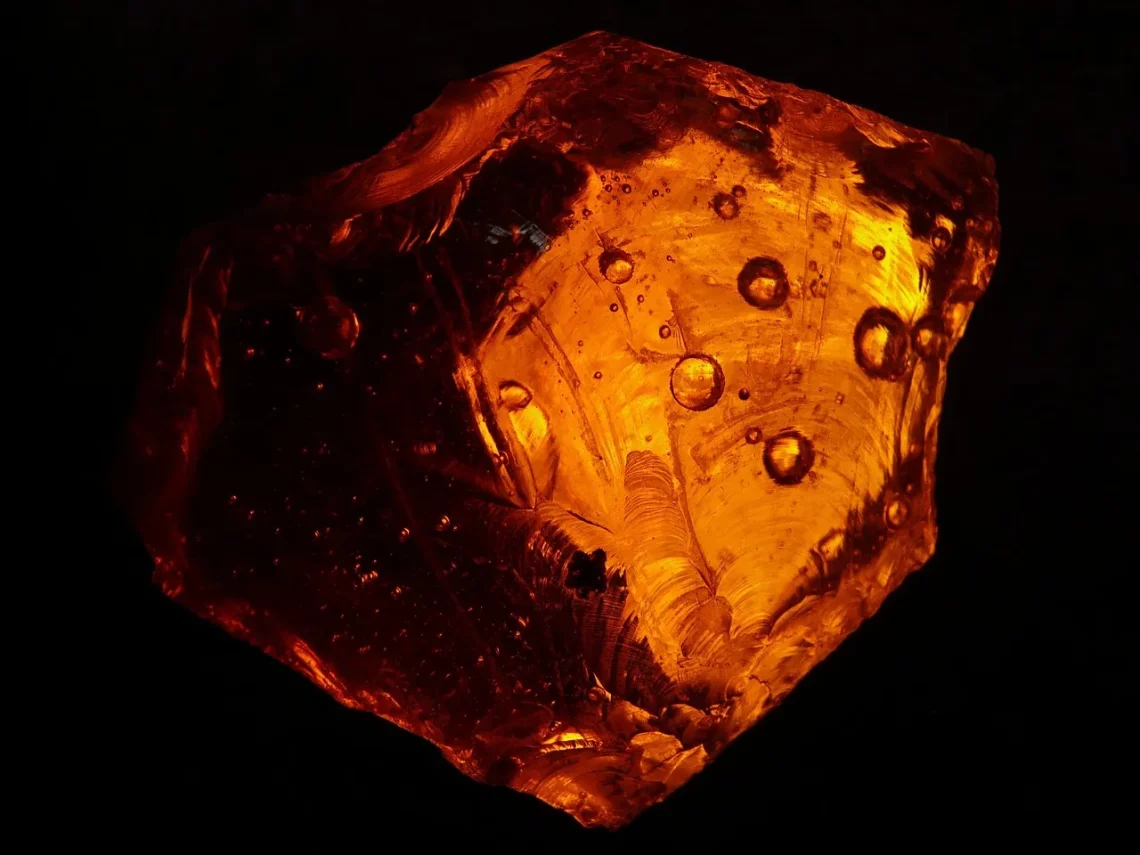
The Fascinating World of Oral Amber: History and Uses Explained
Amber, a fossilized tree resin, has captivated humans for millennia with its warm hues, organic beauty, and intriguing history. Often associated with ancient treasures and natural wonders, this remarkable substance has transcended its geological origins to become a cherished material in various cultural and artistic expressions. The allure of amber is not confined to its aesthetic appeal; it has also played significant roles in medicinal practices, spiritual beliefs, and even trade.
As people have sought to understand and utilize amber throughout history, they have uncovered a myriad of properties and uses that continue to fascinate both enthusiasts and scholars alike. From ancient civilizations that revered amber as a symbol of power and protection to modern-day artisans who fashion it into unique jewelry pieces, the journey of amber is a testament to humanity’s enduring connection with nature. This connection invites exploration into the many facets of amber, including its formation, historical significance, and practical applications.
As we delve deeper into the world of amber, we will uncover its multifaceted roles in various cultures and its impact on both historical and contemporary practices. Let us embark on this enlightening journey to explore the rich tapestry of amber’s history and its diverse uses, revealing why it remains a subject of intrigue and admiration.
The Formation and Characteristics of Amber
Amber is a fascinating natural substance that originates from the resin of ancient trees. Over millions of years, this resin undergoes a process called polymerization, where it hardens and fossilizes, ultimately transforming into the beautiful amber we know today. The formation of amber is a complex interplay of geological, environmental, and biological factors, making each piece unique.
The characteristics of amber are truly remarkable. Its colors can range from golden yellows to deep browns and even greens or blues, depending on the types of trees from which the resin originated and the conditions under which it fossilized. One of the most notable features of amber is its ability to encapsulate ancient life forms, such as insects and plant matter, providing a snapshot of prehistoric ecosystems. These inclusions can offer invaluable insights for scientists studying past climates and biodiversity.
Amber’s lightweight and warm feel make it a popular choice for jewelry and decorative items. Its natural beauty, combined with the unique inclusions, adds a touch of elegance to any piece. Additionally, amber has a distinctive scent that can be released when warmed, further enhancing its appeal. The allure of amber has led to various uses throughout history, from ornamental objects to trade commodities.
In conclusion, the formation and characteristics of amber contribute significantly to its allure. Its unique properties, combined with the fascinating history of its creation, make it a captivating subject for anyone interested in natural history and geology.
Historical Significance of Amber
Amber has held significant cultural and historical importance across various civilizations. In the ancient world, it was often considered a precious commodity, treasured for its beauty and rarity. The Greeks, for example, referred to amber as “electron,” from which the term “electricity” is derived. This is because amber, when rubbed, can attract lightweight objects, demonstrating early observations of static electricity.
Throughout history, amber was often used for trade, especially in regions where it was abundant, such as the Baltic Sea. The Amber Road, a trade route that connected the Baltic region to the Mediterranean, facilitated the exchange of amber for goods like gold, silver, and textiles. This trade not only enriched the cultures involved but also spread the knowledge and appreciation of amber across vast distances.
In various cultures, amber has been associated with spiritual beliefs and practices. For instance, in ancient Rome, amber was believed to possess protective qualities. Romans often wore amber amulets to ward off evil spirits and bring good fortune. Similarly, in many indigenous cultures, amber was used in rituals and ceremonies, symbolizing life, renewal, and the power of nature.
The historical significance of amber extends beyond trade and spirituality; it has also been a subject of artistic expression. Artists and craftsmen have utilized amber in their works for centuries, creating intricate carvings and jewelry that showcase its natural beauty. These artifacts serve as a testament to humanity’s enduring fascination with this extraordinary substance.
In summary, the historical significance of amber is multifaceted, encompassing trade, spirituality, and artistry. Its influence can be seen across cultures and time periods, highlighting the deep connection humans have had with this unique natural material.
Modern Uses of Amber
In contemporary society, amber continues to be valued for its beauty and versatility. One of the most prominent uses of amber today is in the jewelry industry. From necklaces and bracelets to earrings and rings, amber jewelry is cherished for its unique aesthetic appeal. Artisans often use a combination of polished and raw amber to create striking designs, emphasizing the natural inclusions that make each piece one-of-a-kind.
Beyond jewelry, amber is also gaining recognition for its potential health benefits. Although scientific research is ongoing, some proponents believe that amber can have positive effects on well-being. For instance, Baltic amber is often used in teething necklaces for infants, with the belief that it may help soothe discomfort. The idea is that when warmed against the skin, amber releases succinic acid, which is thought to have anti-inflammatory properties.
Additionally, amber is used in aromatherapy and natural wellness products. Amber essential oil, derived from the resin, is believed to promote relaxation and reduce stress. It is often incorporated into massage oils and diffusers, enhancing the ambiance of a space while providing a soothing experience.
In the realm of art and design, amber is used in a variety of creative applications. Artists and designers have begun to incorporate amber into interior décor, creating stunning pieces that capture the essence of nature. From amber inlays to decorative sculptures, the possibilities are endless.
In conclusion, the modern uses of amber reflect its continued relevance in contemporary culture. Whether through jewelry, wellness products, or artistic endeavors, amber remains a cherished material that resonates with people today, just as it has throughout history.
The Therapeutic Properties of Amber
Amber has been attributed various therapeutic properties, particularly in traditional medicine practices. While many claims about amber’s benefits are anecdotal, its historical use suggests a deep-rooted belief in its healing qualities. The most commonly cited use of amber is in the form of teething necklaces for babies, where it is thought to alleviate discomfort associated with teething.
The belief behind amber’s efficacy lies in its composition. When warmed against the skin, it is said to release succinic acid, a compound that may have anti-inflammatory effects. Parents often report positive outcomes when using amber necklaces, although scientific studies validating these claims are limited. It is essential for parents to approach such remedies with caution and consult healthcare professionals before trying alternative treatments.
In addition to teething relief, amber has been used in folk medicine to treat a range of ailments. Some traditions suggest that wearing amber can help balance energy levels, reduce stress, and promote overall well-being. These beliefs may stem from the stone’s natural warmth and connection to the earth, which can be psychologically comforting.
Amber is also sometimes incorporated into topical creams and oils, believed to enhance skin health. The use of amber in skincare products capitalizes on its perceived anti-inflammatory properties and its ability to promote a sense of calm. Users often seek out these products to experience the soothing effects attributed to amber.
While the therapeutic properties of amber are still a topic of discussion and research, its historical and cultural significance cannot be denied. As with any health-related topic, individuals should consult with medical professionals for advice and treatment options. This article is not meant to provide medical advice, and readers are encouraged to seek professional guidance for any health concerns.
In summary, amber’s therapeutic properties, rooted in tradition and anecdotal evidence, continue to intrigue those who seek natural remedies and holistic approaches to well-being.
In conclusion, the world of oral amber is rich and varied, encompassing aspects of history, culture, and modern applications. From its formation and unique characteristics to its historical significance and contemporary uses, amber remains a captivating subject. Its allure transcends time, connecting us with nature and the stories of those who came before us. Whether appreciated for its beauty or its potential benefits, amber is a testament to the enduring bond between humanity and the natural world.




